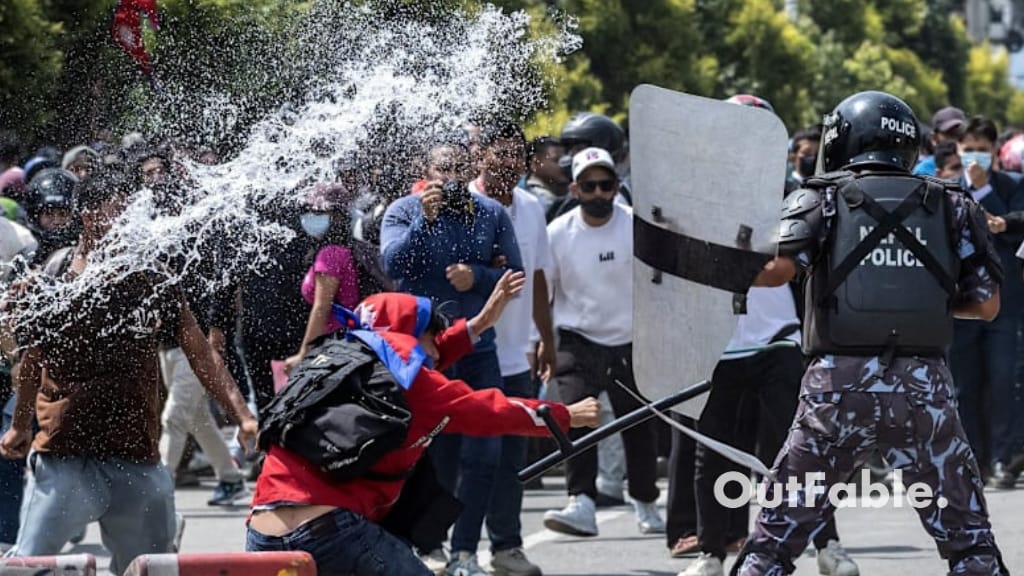Nepal was seen burning this week after two days of youth-led protests that led to the government backfiring which killed at least 30 people, injured more than a thousand, and ultimately got Prime Minister K P Sharma Oli to resign from his position. The protest, which is spread across Kathmandu and other cities, is being led by the Generation Z, young Nepalis taking a jibe at corruption, nepotism, and economic stagnation.
When the young people in the nation started posting about the corruption and how the leaders have been settling their families in other Nations, helping them live luxury life while the youth of Nepal was left to suffer, it immediately triggered the government. The government issued a notice of ban on 26 social media platforms, which it said was necessary to curb misinformation. For young people already angry at shrinking opportunities and rising prices, the move was seen as blatant censorship. It started as a peaceful protest by some, and soon thousands took to the streets, waving pirate flags borrowed from anime fandoms and attacking symbols of state power. By Tuesday evening, protesters had torched Singha Durbar, the Supreme Court, and even homes of senior leaders, forcing the army to impose curfew and deploy helicopters to rescue ministers under siege.
Oli’s resignation came as the protests escalated and several people died. President Ram Chandra Poudel was moved to an undisclosed location under army protection. Tribhuvan International Airport was briefly shut before resuming operations on Wednesday. Officials also confirmed that Rajyalaxmi Chitrakar, wife of former Prime Minister Jhalanath Khanal, survived after her home was set ablaze and is now in stable condition at Kirtipur Burn Hospital.
On Wednesday morning, about 15 representatives of the Gen Z movement met army officials at Bhadrakali base. They proposed names for a transitional civilian leadership, including former chief justice Sushila Karki, Kathmandu mayor Balendra Shah, ex-speaker Onsari Gharti Magar, lawyer Om Prakash Aryal, Dr Govinda KC, Brig Gen Prem Shahi, and former chief election commissioner Neel Kantha Upreti. However, things didn’t go smoothly when delegate Raksha Bam walked out, objecting to the army’s suggestion to include businessman Durga Prasai and the Rastriya Swatantra Party (RSP) in the process. Both have been accused by youth groups of defending the status quo; Prasai has openly called for restoring the Hindu monarchy.
“We believe this undermines the sacrifices made during the Gen Z movement,” Bam said, adding that including such figures would betray the movement’s demand for accountability. Organisers, who had initially called for a nationwide clean-up campaign under the slogan “clean the streets, don’t destroy them,” later withdrew that appeal after the army warned against any public gatherings during curfew.
The army maintained checkpoints across Kathmandu, broadcasting alerts through loudspeakers and warning of legal action for arson or looting. “We are mainly in the process of controlling elements who are taking advantage of the situation,” army spokesperson Rajaram Basnet said.
Despite the restrictions, small groups continued symbolic gestures of defiance. “Corruption has been in Nepal for a very long time, and it is high time the nation needs to change,” said 14-year-old Ksang Lama, who did not attend the protests but voiced support. In eastern Nepal, 36-year-old Rakesh Niraula called the uprising a “lesson for leaders to improve themselves.” Many young protesters, like 24-year-old Parash Pratap Hamal, said they now looked to independent figures such as Kathmandu mayor Balen Shah to lead a new political chapter.
Analysts warn that while the social media ban was the spark, the level of the protests reveals much deeper frustrations, a stalled economy, entrenched political patronage, and a generation that feels its future has been stolen. No party has yet backed the call for dissolving parliament, but backchannel talks have reportedly begun between former chief justices and youth intermediaries. A senior army officer said the institution would support “a constitutional process” but would not “broker chaos.”
For now, Nepal’s streets remain tense, but the energy of its young protesters has sent an unmistakable message: they will not quietly accept flawed politics as usual.
